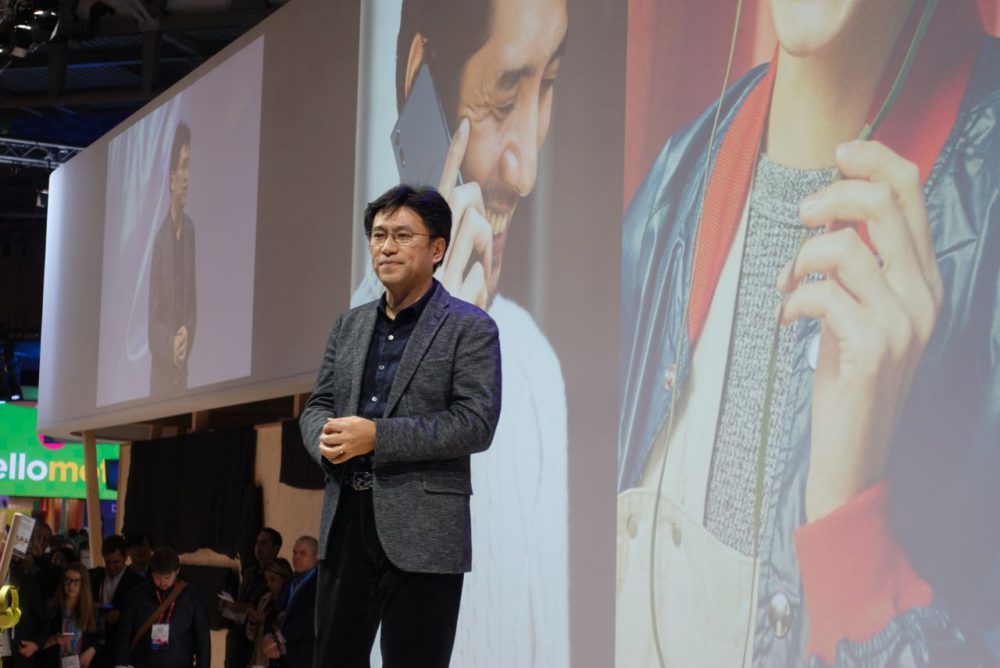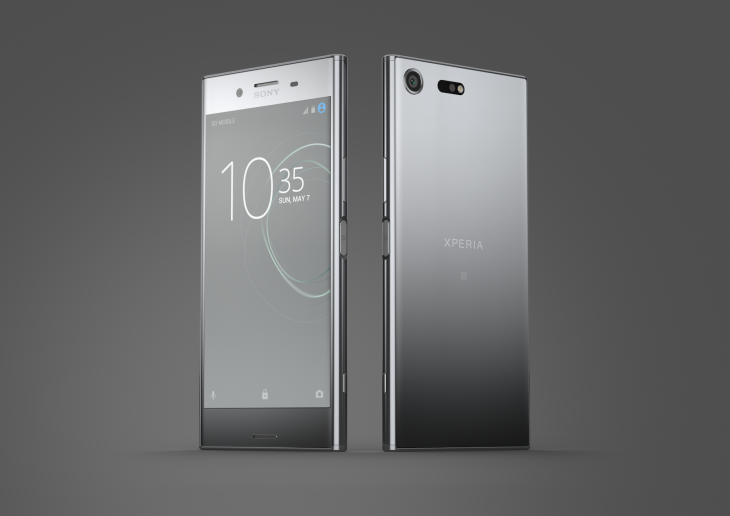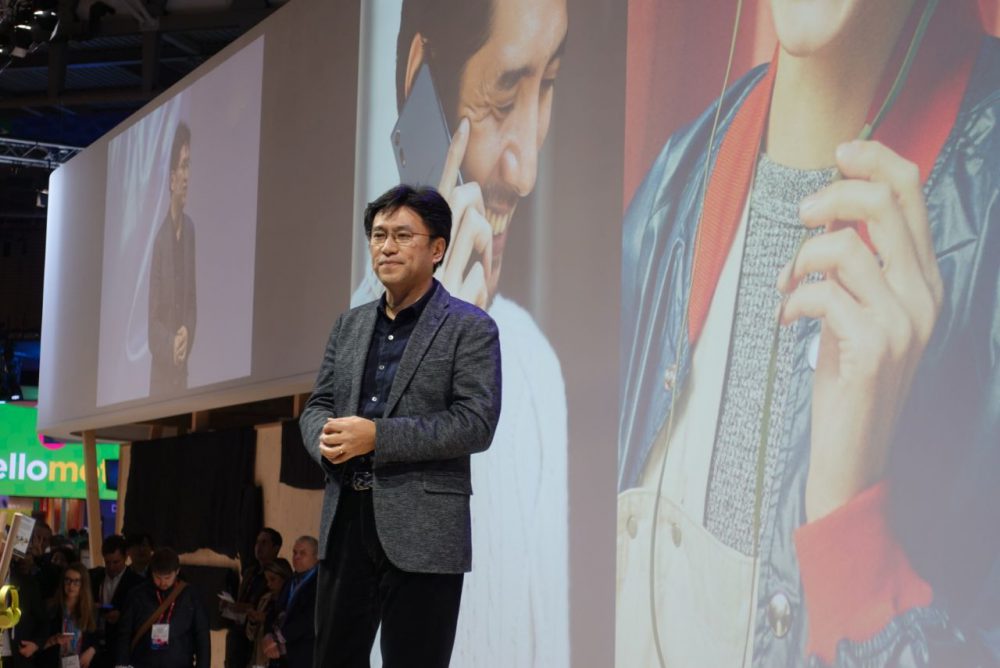
Sony has bolstered its Xperia X series lineup this year with the Xperia XZ Premium, XZs, XA1 and XA1 Ultra launching this morning in Barcelona at their press event hosted by Hideyuki Furumi, EVP Global Sales & Marketing, Sony Mobile Communications Inc.
Sony’s last foray into 4K screen technology on mobiles was the incredibly shiny 5.5-inch Xperia Z5 Premium back in 2015. Today that model gets a sequel in the Xperia XZ Premium, with a few technological tricks up its sleeve.
Not forgetting the midrange, Sony’s also brought in an update to its affordable Xperia XA phones in the XA1 series, where the new device has a standard 5-inch screen and a new large-screen device in the XA1 Ultra, with its 6-inch screen. Both phones run lower-end hardware, which should put them in an interesting place for budget-conscious buyers.
Sony focuses on the Camera, Performance and Design, and these phones deliver on all three fronts.
Xperia XZ Premium, Xperia XZs

As a followup to 2015’s super high-end Xperia Z5 Premium, you can expect three things from a Sony “Premium”-monikered phone: it’ll be big, it’ll be shiny, and it’ll have some kind of 4K-esque screen technology. All three things hold true of today’s Xperia XZ Premium.
The big differentiator on the screen technology front this year is the addition of High Dynamic Range (HDR) support on the screen, something Sony’s mobile division has adopted very quickly from its Bravia TV division. HDR brings more vivid tones and truer colours, allowing your 4K content to really shine. As with 2015’s model, it’s amazing to hold a device capable of displaying such high resolution imagery in the palm of your hand.
A screen capable of displaying 4K HDR content is great, but it’s content that’s important. Sony’s talking up a partnership with Amazon Prime Instant Video to stream that 4K HDR content to your phone.
Camera
Sony’s also bringing an updated camera with a 19MP resolution. The new camera, Sony says, will better capture texture detail and light in your scenes and the slight dip in resolution allows the pixels to be made larger, offering 20% better low-light performance. The updated camera is also “distortion-free” – it can eliminate the tearing effect that often occurs when you pan your camera around.
Motion Eye
As if that wasn’t a big enough change though, Sony’s introduced new Motion Eye technology, loading storage and processing directly into the camera allowing it to buffer images and video before they leave the sensor. This can pull off a few neat tricks.
Firstly, the camera can record Super Slow Motion video at a whopping 960 frames per second at 720p resolution. That’s a lot of imagery to buffer though, so you can’t expect it to sustain that throughput for too long – you’ll catch 0.2s of video in super slow motion, but that’ll blow out to 6 seconds of video playback. Super Slow Motion can be engaged during a standard video shoot with a tap of the button and merged seamlessly into the finished video.
Sony is also looking to Motion Eye to bring some pre-shot intelligence to snapping moments, with the XZ Premium’s camera holding on to 4 frames based on motion detected in the frame. Operating on the (likely correct) assumption that if things suddenly move and cause a change in the scene while your camera is pointed somewhere in the second before you click. The Motion Eye technology will capture and hold the frames closer together or further apart depending on the movement in the shot. Motion Eye lets you capture the moment someone stuck their head into a shot or the time that balloon burst but your reaction time was a little off – a great aid to those of us who constantly miss moments. The predictive frames are offered to you after the photo is taken.

Externally, the Xperia XZ Premium has the super shiny mirror-like finish of its predecessor, this time in two colours: Luminous Chrome and Deepsea Black. The phone features water and dust resistance and is protected by super strong Gorilla Glass 5 on the front and fingerprint sensor built into the power button on the side of the phone.
Internally, the phone is bang up to date. There’s a Snapdragon 835 on offer and the phone can deliver Cat-16 LTE speeds. The USB-C connector on the bottom also supports Quick Charge 3.0 and can charge to 60% in 45 minutes. At that point, Sony’s Qnovo adaptive charging technology takes over, and slows the charge rate to preserve the battery and ensure it’ll last the lifetime of the phone.
Xperia XZs
If you’re excited at the prospect of the new camera technology packed into the Premium but not sure you want the shiny finish or 4K HDR screen, Sony’s got another option for you – the Xperia XZs brings the new camera into an update of to the company’s previously released XZ model. Don’t get too excited though, if you’re after this model you’ll need to import as it won’t be coming to Australia.
Xperia XA1, XA1 Ultra
We’ve grouped these phones together because they are essentially the same device, despite a few differences. The Xperia XA represented a run at the midrange market last year, and formed one of the most important parts of the Xperia X series. It’s good to see it back with a couple of big upgrades this year.
In the most significant upgrade, Sony’s brought the 23MP camera technology from the Xperia Z5 down to its midrange lineup. The Z5’s camera impressed in most respects with great detail and a wide field of view and this is sure to bolster Sony’s midrange offerings. Sony’s increased that field of view, too, with the camera now offers 88 degrees.
The XA and XA1 also feature a new physical build, with a “seamless loop” surface offering a continuous curve around the sides of the phone and offering almost no side bezel. The phones feel great in the hand, like a nice solid slab of technology. This curvature is being capitalised on by the screen which features what Sony call a borderless design for a full-width display which should make for a smooth media viewing experience.
The smaller Xperia XA1 features a 720p 5-inch screen, while the XA1 Ultra – as you’d expect – features a larger 6-inch 1080P resolution screen that’s good for media consumption.
Both phones utilise the MediaTek MT6757 SoC, adding Octa-core power to the mid-range devices, and while the XA1 gets 3GB of RAM the XA1 Ultra should see a slight bump in performance with 4GB of RAM.
| Sony Xperia XA1 | Sony Xperia XA1 Ultra | Sony Xperia XZ Premium | Sony Xperia XSs | Release date | TBC | TBC | TBC | — | Screen size | 5.0-inch | 6.0-inch | 5.5-inch | 5.2-inch | Screen technology | — | — | 4K HDR | — | Resolution | 1,280 x 720 | 1,920 x 1,080 | 3,840 x 2,160 | 1,920 x 1,080 | PPI | 294 | 367 | 806 | 424 | Rear camera | 23MP | 23MP | 19MP | 19MP | Front camera | 8MP | 16MP | 13MP | 13MP | Chipset | MediaTek MT6757 | MediaTek MT6757 | Snapdragon 835 | Snapdragon 820 | Core config |
|
| — | — | Ram | 3GB | 4GB | 4GB | 4GB | Storage | 32GB | 32/64GB | 64GB | 32/64GB | MicroSD | Yes, up to 256GB | Yes, up to 256GB | Yes, up to 256GB | — | Battery | 2,300 mAh | 2,700 mAh | 3,230 mAh | 2,900 mAh | Battery removable | — | — | — | — | Connector | USB C | USB C | USB C | USB C | Headphone Port | Yes | Yes | Yes | — | Headphone Location | — | — | — | — | Speaker Configuration | — | — | — | — | NFC | Yes | Yes | Yes | — | Android OS | Android 7.0 | Android 7.0 | Android 7.1 | Android 7.1 | Vendor skin | Xperia UI | Xperia UI | Xperia UI | Xperia UI | Dimensions | 145 x 67 x 8mm | 165mm x 79mm x 8.1mm | — | 146 x 72 x 8.1 mm | Weight | 143g | — | — | 161g | Colours |
|
|
|
|
|---|
Sony’s not quite ready to talk local pricing and availability for these devices yet – we can expect to hear about these in the coming months.
Will you be trading up to one of Sony’s new phones? Tell us in the comments!





I absolutely love the look of Sony Phones, The sleek slab shape is awesome.
If only the top and bottom bezels were half the size. And one model had Qi Charging.
Cmon Sony, just one phone with mini bezels and Qi. Please?
I was hoping one of these 4 devices would be a Xperia Compact phone. Oh well.